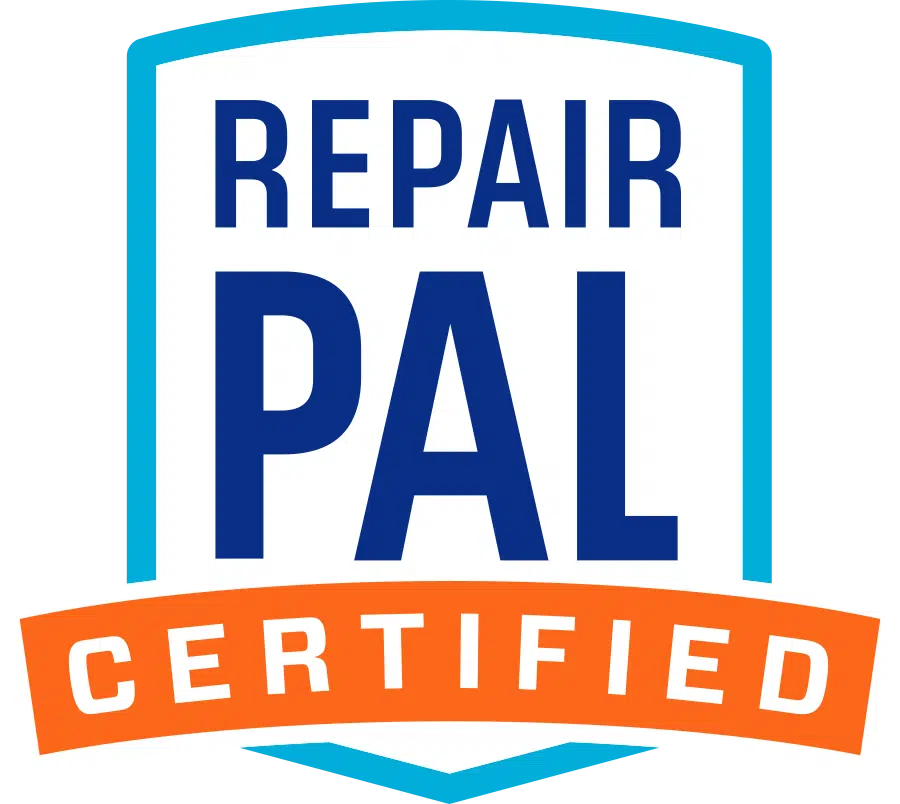What Does Code P0134 Mean?
- P0134 definition: O2 Sensor Circuit No Activity Detected (Bank 1, Sensor 1)
- Issue Severity: MODERATE– Extended driving with this code can cause internal engine damage.
- Repair Urgency: Get this code fixed as soon as possible.
- Diagnosis: It is important to complete the entire diagnostic process when diagnosing the P0154 code. This DTC can be triggered by an exhaust leak, vacuum leak, faulty ECM, and faulty oxygen sensor and/or wiring.
Code P0134 is triggered when your vehicle’s O2 sensor (bank 1, sensor 1) is malfunctioning. The Engine Control Module (ECM) detects that the Oxygen (O2) sensor is at a standstill and is not accurately reading the amount of oxygen in the exhaust. This error in the oxygen sensor causes the ECM to misread the amount of oxygen and fuel coming through the exhaust, which inhibits it from ensuring the optimal fuel ratio.
P0134 Causes
- Faulty O2 sensor
- Faulty heater circuit
- A frayed or broken wiring
- Poor connection at the O2 sensor connector
- Engine Vacuum Leak
- Exhaust Leak
- Faulty ECM
P0134 Symptoms
- Check Engine Light
- Higher emissions
- Excessive smoke from the exhaust
- Poorly running engine
- Lower fuel economy
How Do I Fix Code P0134?
With a P0134 code, the first step is to get it properly diagnosed to figure out what is causing the malfunction in the oxygen sensor system. Using the live data function of the FIXD sensor and app allows you to read and analyze engine data to properly diagnose a P0134 code.
If the sensors are all reading correctly, check for leaks in the vacuum lines and exhaust system. If any of these conditions exist and you’re not comfortable further diagnosing this issue at home, we recommend finding a RepairPal-certified shop to pinpoint the problem and give an accurate estimate for repairs.
These shops can not only help you figure out what’s going wrong before you waste time and money on the wrong parts, but they also offer a minimum 12-month, 12,000-mile warranty and stand behind all their estimates with guaranteed fair pricing.
> Find a RepairPal Certified Shop Near You
How Much Does It Cost to Fix Code P0134?
If you take your car to a shop for diagnosis, most shops will start with an hour of “diag time” (the time spent in labor diagnosing your specific issue). Depending on the shop’s labor rate, this typically costs somewhere between $75-$150. Many, if not most, shops will apply this diagnosis fee to any required repairs if you have them perform the repairs for you. From there, a shop will be able to give you an accurate estimate for repairs to fix your P0134 code.
Possible Repair Costs for P0134
When it comes to making repairs associated with the P0134 code, one or more of the below repairs may be needed to solve the underlying issue. For each possible repair, the estimated cost of repair includes the cost of the relevant parts and the cost of labor required to make the repair.
- Oxygen sensor: $200-$300
- A leak in exhaust: $100-$200 (if welded to repair)
DIY Steps to Diagnose Code P0134
If you’d like to try to fix code P0134 at home without throwing money at parts, you’ll want to follow the steps below for proper diagnosis. Complete diagnosis may require some specialized equipment beyond what the FIXD Sensor can provide, but the biggest challenge for this repair is that internal engine issues could be the root cause of this code. As such, this diagnosis and repair should not be attempted by beginner DIYers.
DIY difficulty level: Beginner
This repair can be attempted by beginner DIYers.
Tools/parts needed (our top picks from Amazon):
STEP 1: USE FIXD TO ENSURE NO OTHER ENGINE CODES ARE PRESENT.
Scan your vehicle to verify P0134 is the only code present. If other codes are present, they must be addressed first.
STEP 2: INSPECT O2 SENSORS AND WIRING.
Visually check the electrical connections, wire harness, and metal tabs in terminals for any damages. If any damage is found, replace the oxygen sensor.
STEP 3: CHECK OXYGEN SENSOR(S) WITH MULTIMETER.
Consult your vehicle repair manual to locate the harness connector for the O2 sensor, and using your multimeter, check to make sure that the sensor is getting battery voltage. Disconnect the harness connector and turn the ignition to the on position (do not crank car). Test O2 sensor for proper voltage with a multimeter using the instructions from your vehicle’s repair manual. Check for varying voltage of between .1-.95V with the engine running at operating temperature. If this reading isn’t within spec, consider replacing the O2 sensor 1 on bank 1.
STEP 4: CHECK FOR EXHAUST AND VACUUM LEAKS.
Replace vacuum lines or intake air tube if there are signs of cracks or disconnections. Check for any exhaust leaks between the engine and the O2 sensor. Repair as needed.
STEP 5: CONSULT A PROFESSIONAL.
If at this point the vehicle is still setting the same code, you may have a more serious problem with your car’s oxygen sensor system, and you should bring the vehicle to a certified shop to have further diagnostic work performed.
Common P0134 Diagnosis Mistakes
Prematurely replacing the oxygen sensor when the issue lies within the wiring or connectors, which could have been diagnosed by a visual inspection.
Still Need Help Fixing Code P0134?
If you’ve followed the steps above and are still experiencing issues with the oxygen sensor system and code P0134, please contact the FIXD Mechanic Hotline if you’re a FIXD Premium subscriber or find a RepairPal certified shop near you to get the right repairs at a fair price.
Popular Engine Codes p0420 code p0172 code p00171 code p0128 code p0300 code p0456 code p0430 code p0442 code p0455 code p0113 code
Fixed It But The Check Engine Light Is Still On?
Check engine light sometimes need to be reset manually, check out our article:
How to Reset Your Check Engine Light | 4 Ways To Clear It (With or Without a Scanner)

Recovering autocross and track day enthusiast. Once turned a VW Jetta into a pickup truck. Lives in a van down by the river. Dream car: 2001 Subaru WRC rally car.















